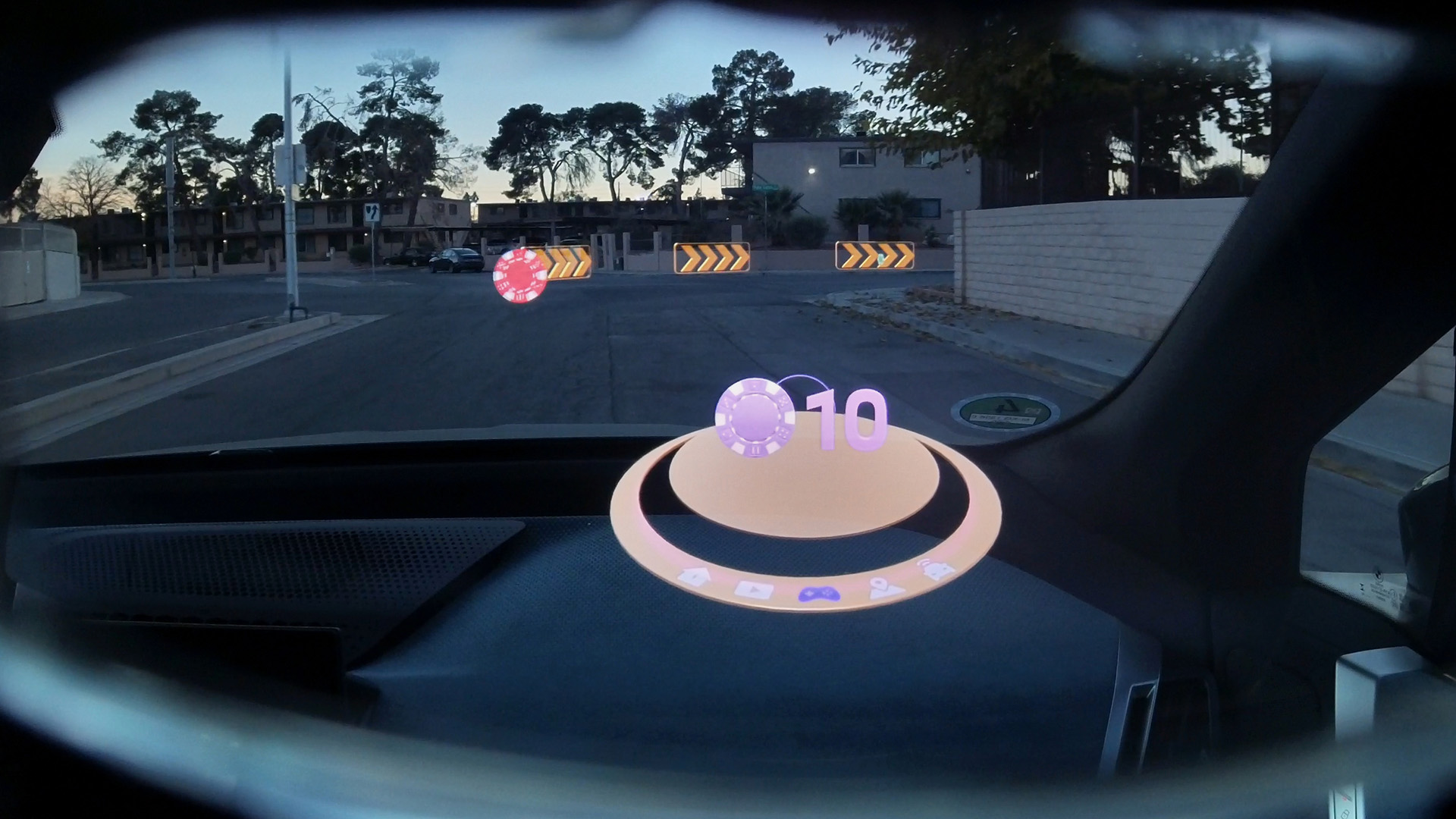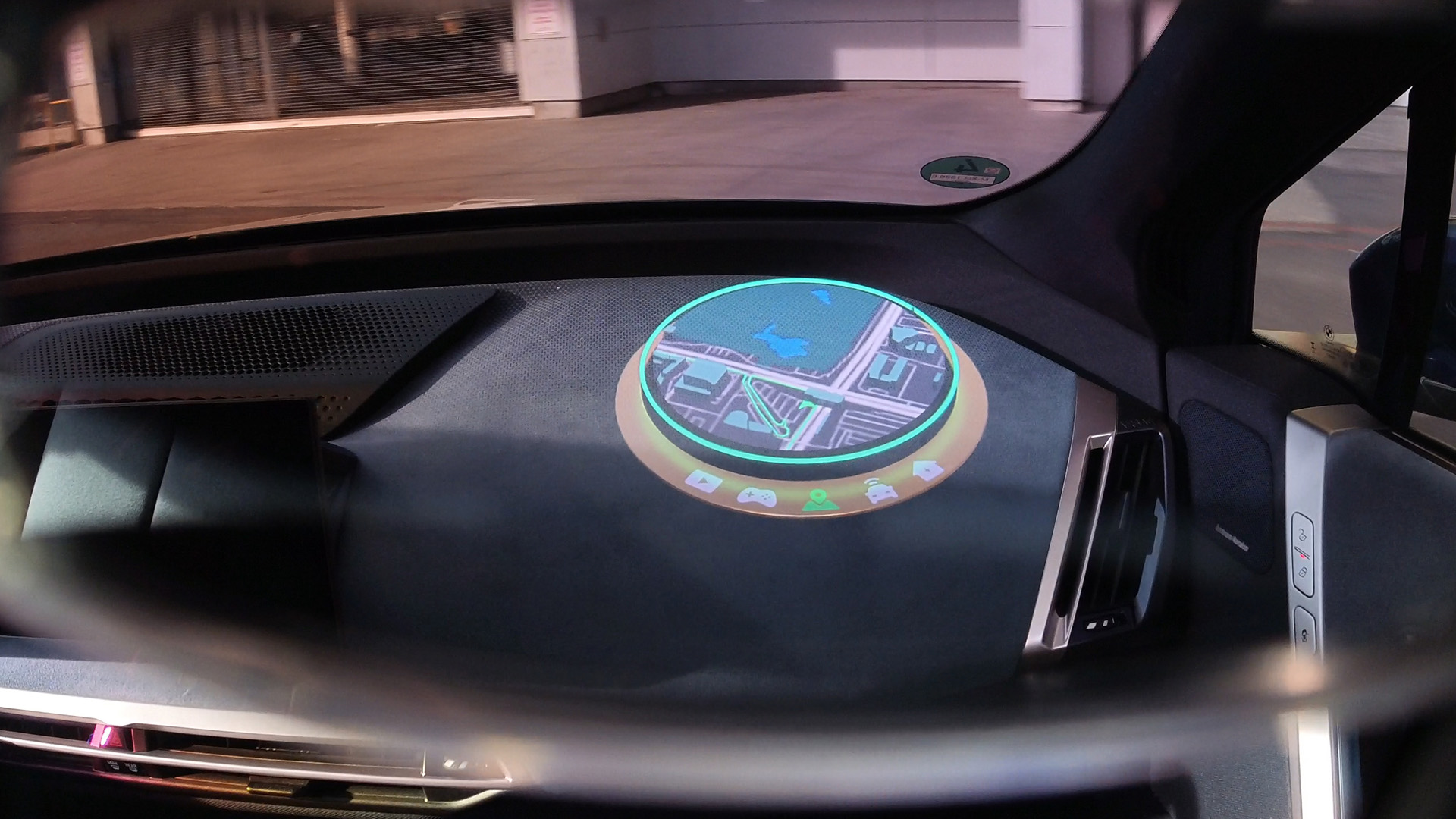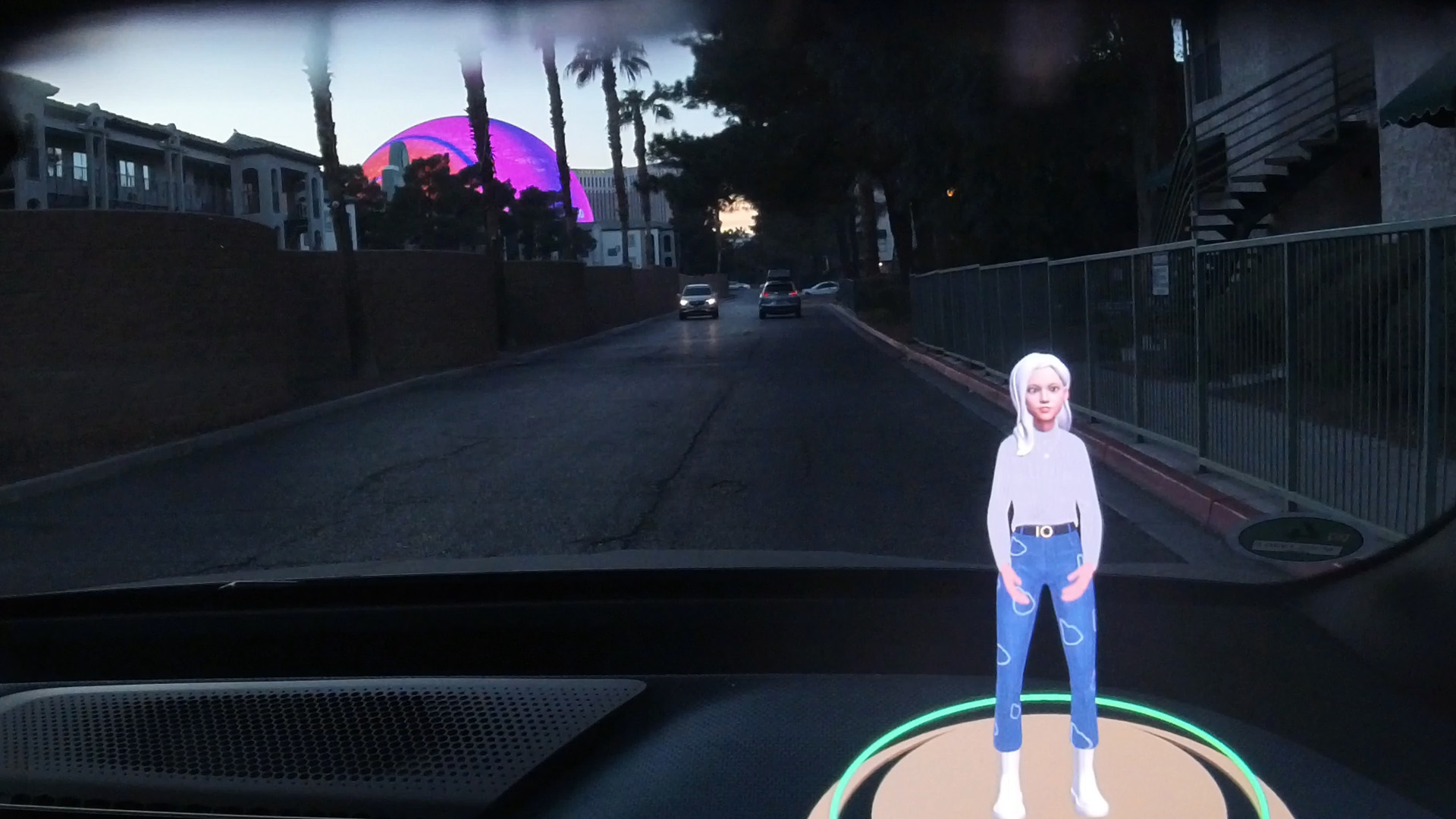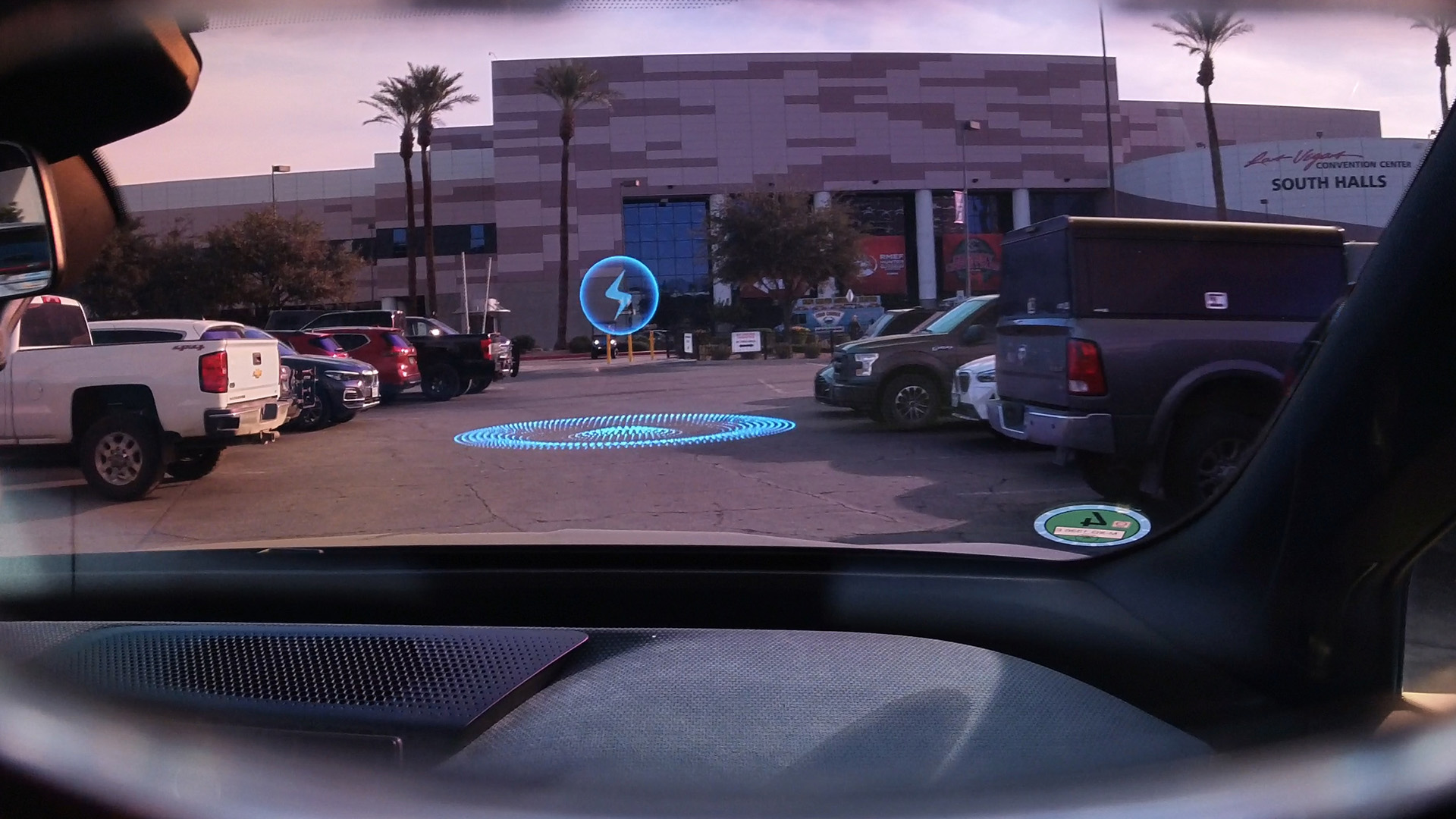
BMW’s idea of an augmented reality windscreen just got a bit closer to reality. The concept was part of the iVision Dee car that is paving the way for the company’s Neue Klasse vehicles that will launch from 2025. At CES 2024, however, we got a bit of a preview of how this will work.
The enhanced driving experience uses XREAL Air 2 augmented reality glasses for the passenger or driver (where regulations allow). Once wearing the glasses you get a small circular panel that sits virtually on your dashboard, which allows you to switch between modes.
In navigation mode, directional arrows and warnings appear on the road in front of you, like an expanded head-up display. There are virtual speed signs, roadworks warnings and stop signs that show up clearly and animate on the road in front of you. These are far easier to follow than even the best head-up displays, as they really follow the road positioning. You also get an overview of your journey on the dash.
When driving or reversing, blocks appear in the road to highlight obstacles, such as curbs and barriers close to the car. There's also a virtual charging icon, which could be used to find a future charging pad for electric cars, that simply requires you to park over the charger – like a giant wireless charging pad.

The system can also provide info about local sites and surrounding buildings, which are spoken to you by an avatar that appears on the dash. It’s certainly a more real type of virtual assistant than the formless Alexa or Siri offerings.
For the passenger, the glasses also offer a game mode. I tried one where you had to move a circle around to swallow up poker chips. The circle moves based on where you are looking, so after a little practice, it was easy enough to play, and far more fun than I expected. It also provided a rain shower of dice and poker chips – we were in Vegas after all.
The final mode available opens up the potential to watch films on a big screen in the car, so again ideal for the passenger – at least until level 3 automation (eyes-off driving) takes hold. You can fold down the sun visor to provide a darker background and the screen appears in your vision, much larger than any physical display screen could.

The one downside at the moment is that the projected area in the glasses is fairly small, so doesn’t cover the full field of vision. This means that you sometimes have to physically turn your head to see some features. That’s something that will change as the glasses improve though. The glasses also need to be plugged in, as there’s no onboard processing. This isn’t the biggest problem, as you are stationary inside the car, but a wireless connection would be more convenient.
Augmented reality is definitely in its infancy, and will get better as the glasses get smaller and easier to wear. The ideal of course would be to make the whole windscreen into one big augmented reality lens, but that could be a few years away yet.
While these glasses are still a concept, the system is entirely possible. The Xreel Air 2 glasses are available to buy already and while the demo I experienced was prerecorded, the system is close to being ready. BMW already offers its Motorrad Smart Glasses for its motorcycles, which provide speed and navigation information for bikers. However, these aren’t locked to the road position in the same way as this AR concept. I’d love these to make their way into the market, even just for the passenger. It’s a fun addition to what is becoming a wide range of entertainment options for electric vehicles.








